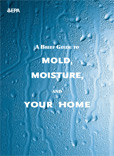Grasping the primary causes of water damage is pivotal for every homeowner aiming to shield their living space from potential harm. Whether you’re dealing with the aftermath of water damage or proactively seeking to avert such issues, this guide, tailored for FloodX readers, is packed with indispensable insights and strategies.
This segment dives deep into the foremost reasons behind water damage, offering you the tools to effectively defend your property. Recognizing these triggers allows for preemptive action, significantly diminishing the threat and ensuring your home remains secure.
Crucial Insights:
Identifying the primary triggers of water damage is key to its prevention.
Tackling the root cause empowers homeowners to proactively safeguard their dwellings.
The following section will dissect plumbing dilemmas as a principal source of water damage.
Routine upkeep and prompt repairs are your best defense against water damage.
Never overlook the significance of protecting your residence from water damage.
Plumbing Dilemmas: The Prime Culprits of Water Damage
Plumbing issues stand as a leading factor behind water damage in residences, with leaks and burst pipes causing havoc, leading to extensive harm and expensive fixes. Comprehending the usual plumbing faults that lead to water damage is critical for prevention.
Leaks, either gradual or abrupt, can significantly damage over time. Unnoticed leaky pipes, faucets, and toilets can cause structural damage, mold proliferation, and deteriorate indoor air quality.
Burst pipes, propelled by freezing temperatures, excessive pressure, and wear and tear, can unleash a deluge into your home, leading to severe structural damage.
To combat plumbing-induced water damage, consider these steps:
Conduct regular checks on your plumbing for leaks or corrosion signs.
Address leaks immediately to avoid escalation. For complex repairs, engage a professional plumber.
Insulate pipes in colder home areas to prevent freezing and bursting.
Keep water pressure under control with a pressure regulator to avoid plumbing stress.
Update aging or deteriorating pipes to reduce bursting risks.
Consider leak detection devices or smart sensors for early warning of leaks or bursts.
These preventative tactics can alleviate the stress and costs associated with plumbing-related water damage. By being proactive and addressing plumbing issues swiftly, you safeguard your home’s integrity and value.
Weather-induced Water Damage: Navigating Natural Catastrophes
Natural calamities, like floods and severe storms, spell disaster for homes, culminating in significant water damage. Recognizing and mitigating these risks is crucial when confronting such weather-driven incidents.
Flooding, a common aftermath of extreme weather, can overwhelm drainage systems and invade homes, wrecking structures, belongings, and interiors. Storms, including hurricanes and tornadoes, can cause water damage through roof breaches and shattered windows.
To lessen weather-induced water damage, embrace these preventive measures:
Maintain gutters and downspouts to steer water away from your property.
Regularly inspect and mend your roof to prevent water intrusion.
Seal potential water ingress points on your home’s exterior.
Install a sump pump in basements or crawl spaces to evacuate floodwaters.
Elevate valuable items and electronics in flood-susceptible areas.
Adopting these measures can dramatically reduce the risk and impact of weather-related water damage. Stay alert to weather forecasts and consider appropriate insurance for added security.
Appliance Malfunctions: Overlooked Sources of Water Damage
While plumbing and weather incidents are top-of-mind for water damage, appliance failures also pose significant risks. Faulty washing machines, dishwashers, and water heaters can cause unexpected water damage if not duly maintained.
This section highlights common appliance malfunctions leading to water damage and outlines preventive steps. Recognizing these appliance risks enables proactive measures to avert water damage.
Washing machines, for instance, can leak or overflow, damaging surroundings. Regular hose inspections, securing connections, and ensuring drainage can forestall such issues.
Dishwashers may leak from hose failures, seal wear, or blockages. Routine inspections, leak checks, and maintenance can mitigate water damage risks.
Water heaters can leak or burst, causing damage. Maintaining these units by checking for leaks, flushing tanks, and replacing faulty parts can prevent problems.
Vigilance and timely interventions significantly lower the risk of appliance-related water damage. Inspect and maintain appliances, repair issues promptly, and stay alert to signs of failure.
Conclusion
Mastering the common triggers of water damage is vital for property protection. Addressing plumbing issues, preparing for weather challenges, and maintaining appliances can significantly lessen water damage risks.
For plumbing, fixing leaks and ensuring pipe maintenance can prevent damage. Weather preparation involves clearing gutters, securing your home against leaks, and flood-proofing measures. Regular appliance care and maintenance prevent malfunctions leading to water damage.
Proactive steps to safeguard your home can prevent costly repairs and the inconvenience of water damage aftermath. Stay vigilant, tackle issues swiftly, and keep your property well-maintained to fend off water damage.
Google+








